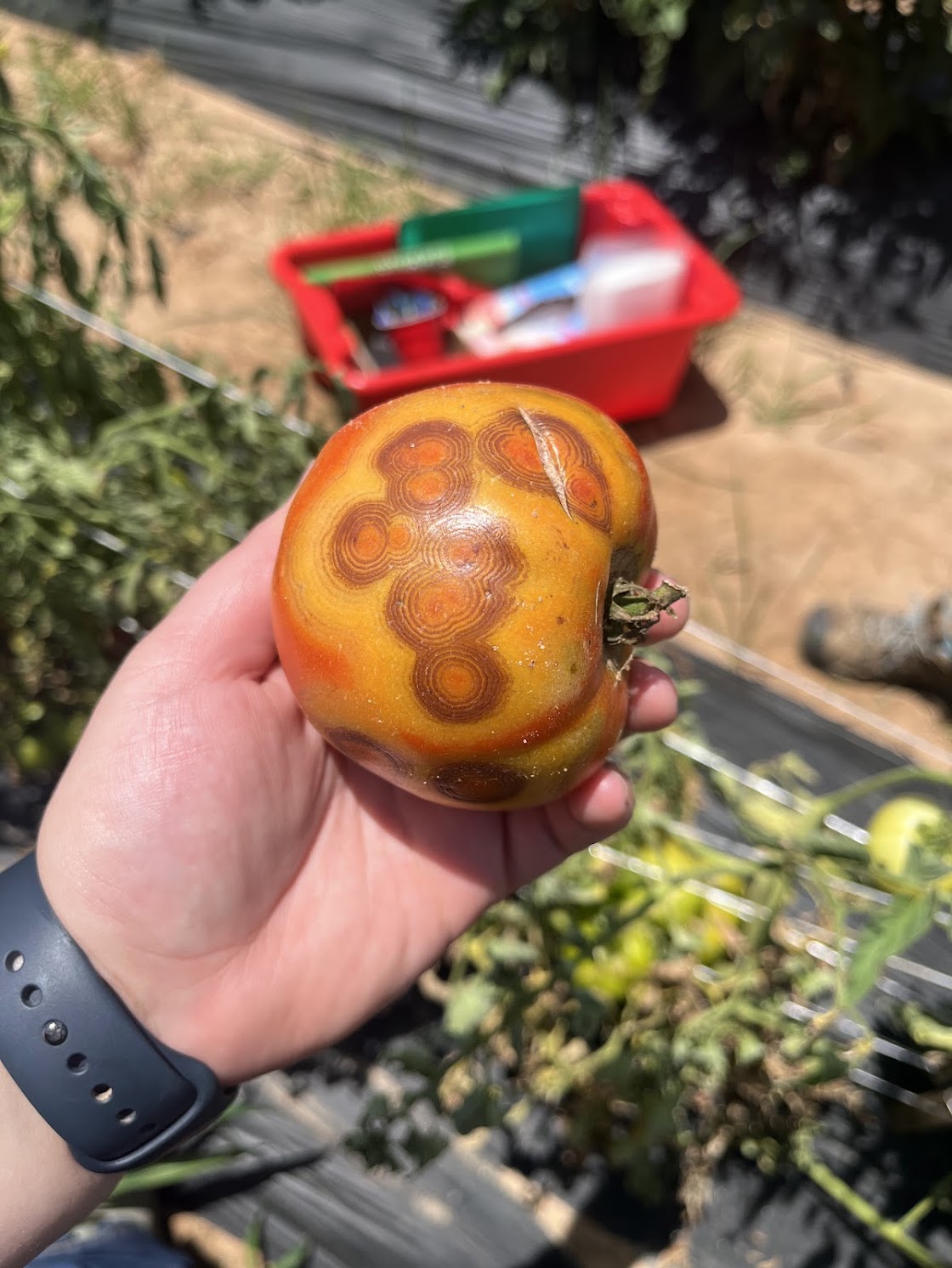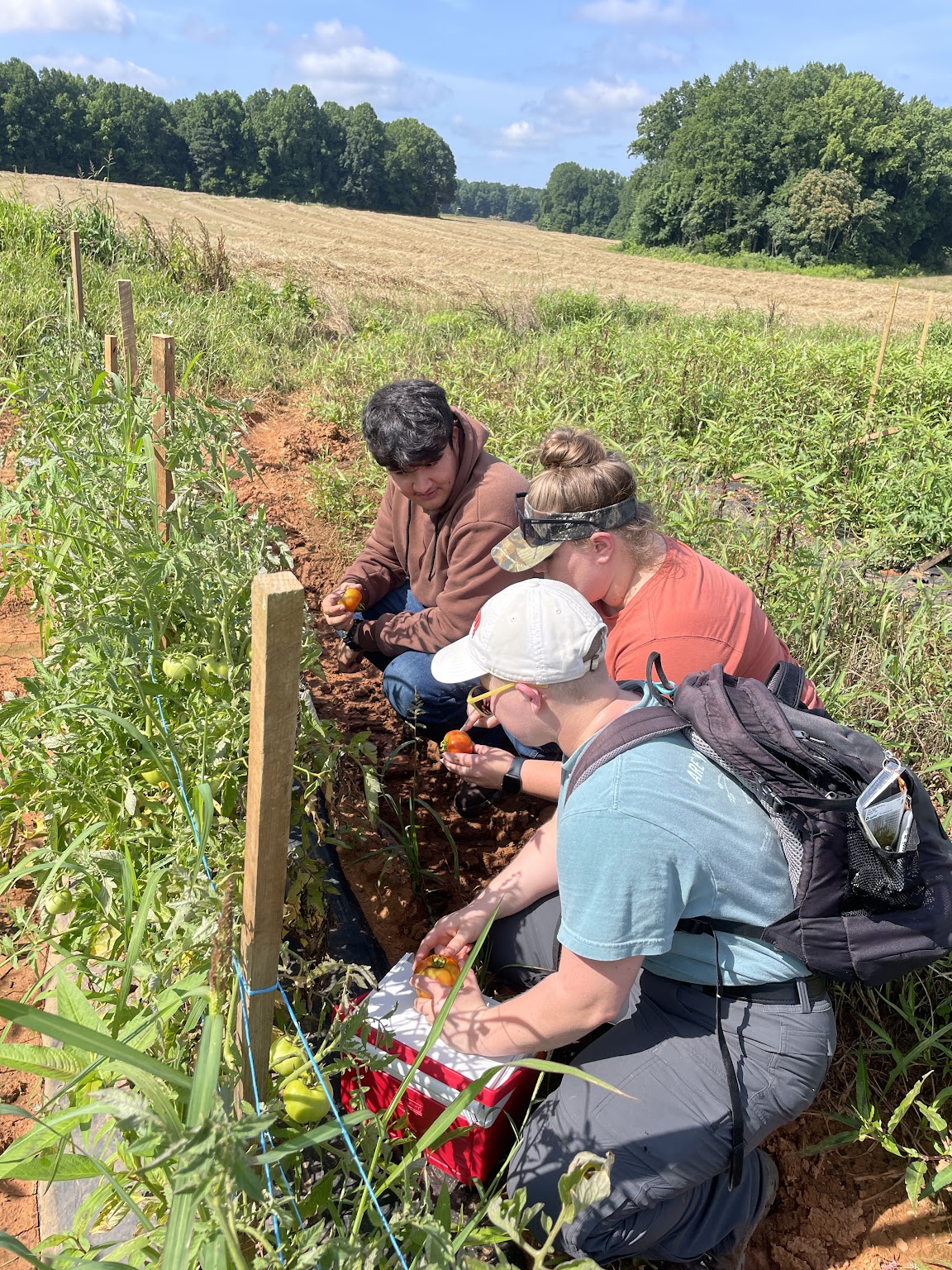Scouting Local Fields for Tomato Spotted Wilt Virus: Helping Farmers Make Informed Variety Choices
go.ncsu.edu/readext?1078331
en Español / em Português
El inglés es el idioma de control de esta página. En la medida en que haya algún conflicto entre la traducción al inglés y la traducción, el inglés prevalece.
Al hacer clic en el enlace de traducción se activa un servicio de traducción gratuito para convertir la página al español. Al igual que con cualquier traducción por Internet, la conversión no es sensible al contexto y puede que no traduzca el texto en su significado original. NC State Extension no garantiza la exactitud del texto traducido. Por favor, tenga en cuenta que algunas aplicaciones y/o servicios pueden no funcionar como se espera cuando se traducen.
Português
Inglês é o idioma de controle desta página. Na medida que haja algum conflito entre o texto original em Inglês e a tradução, o Inglês prevalece.
Ao clicar no link de tradução, um serviço gratuito de tradução será ativado para converter a página para o Português. Como em qualquer tradução pela internet, a conversão não é sensivel ao contexto e pode não ocorrer a tradução para o significado orginal. O serviço de Extensão da Carolina do Norte (NC State Extension) não garante a exatidão do texto traduzido. Por favor, observe que algumas funções ou serviços podem não funcionar como esperado após a tradução.
English
English is the controlling language of this page. To the extent there is any conflict between the English text and the translation, English controls.
Clicking on the translation link activates a free translation service to convert the page to Spanish. As with any Internet translation, the conversion is not context-sensitive and may not translate the text to its original meaning. NC State Extension does not guarantee the accuracy of the translated text. Please note that some applications and/or services may not function as expected when translated.
Collapse ▲This week, a team of specialists hit the fields across Rowan County to assess the presence of Tomato Spotted Wilt Virus (TSWV) and help local farmers make informed decisions about tomato variety selection. Shelby Carroll, Rowan County Agriculture Agent; Inga Meadows, Extension Plant Pathologist; Holly McInnes, an undergraduate student from NC State University; and Eduardo Garcia Ramirez. Together, the team visited area farms to scout tomato crops and identify which varieties are showing resistance to this destructive disease.
TSWV, transmitted primarily by thrips, is a serious issue for commercial tomato growers. It can cause symptoms such as yellowing, ring spots on leaves and fruit, stunted plant growth, and ultimately, reduced yields. However, it is not something backyard gardeners need to be overly concerned about. The virus tends to be more problematic in large-scale production fields where pest pressure and plant stress are higher.
The scouting revealed that some fields, particularly those planted with susceptible varieties, showed clear signs of infection. In contrast, fields growing resistant varieties had noticeably healthier plants and fewer symptoms.
These efforts help us collect valuable local data that will guide future variety recommendations and improve management practices for our farming community. For Rowan County, where tomato production plays a key role in agriculture, this kind of research supports long-term sustainability and crop success.
Farmers are encouraged to consider resistant varieties, monitor for thrips, and contact the Rowan County Cooperative Extension Office for personalized guidance. We’re here to support both large growers and hobby gardeners alike. keeping our crops strong and our community informed.






